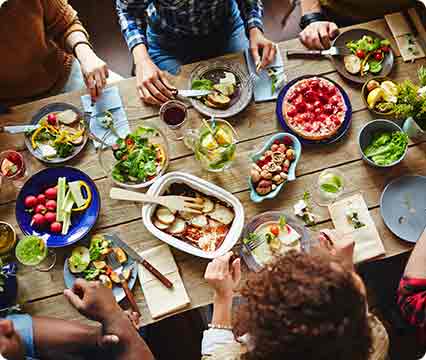People serve themselves larger portions before a social meal
Dietary intake is subject to a myriad of influencers, and amongst those relates to the social setting related to a meal, namely, the presence of familiar individuals. In other words, we tend to eat more food than usual if we eat together with friends or family. As the reasons behind this observation remain not well understood, Ruddock et al. (2021) conducted a couple of studies to investigate the social impact on food consumption. In their first study, the eating behavior of 98 participants (females, average age of 20 years) was observed after allowing the participants access to food and separating them into two groups, depending on the timing of food serving relative to social interaction (whether the participants ate alone or with a friend). In their second study, the authors observed the changes in serving size depending on whether the meal was shared with a friend or with a stranger, in a sample of 120 participants (females, average age of 19 years). In both studies, the authors observed a substantial increase in the amount of food served and consumed in familiar social settings (i.e., eating with friends) compared to eating alone or with a stranger. The authors comment that their findings demonstrate the impact of social interaction on the amount of food we consume, and therefore the necessity to reconsider current viewpoints on the social impact of dietary behavior. [NPID: Human behavior, eating, portion size, eating alone, eating with family, friends]
Year: 2021
 Navigation
Navigation






